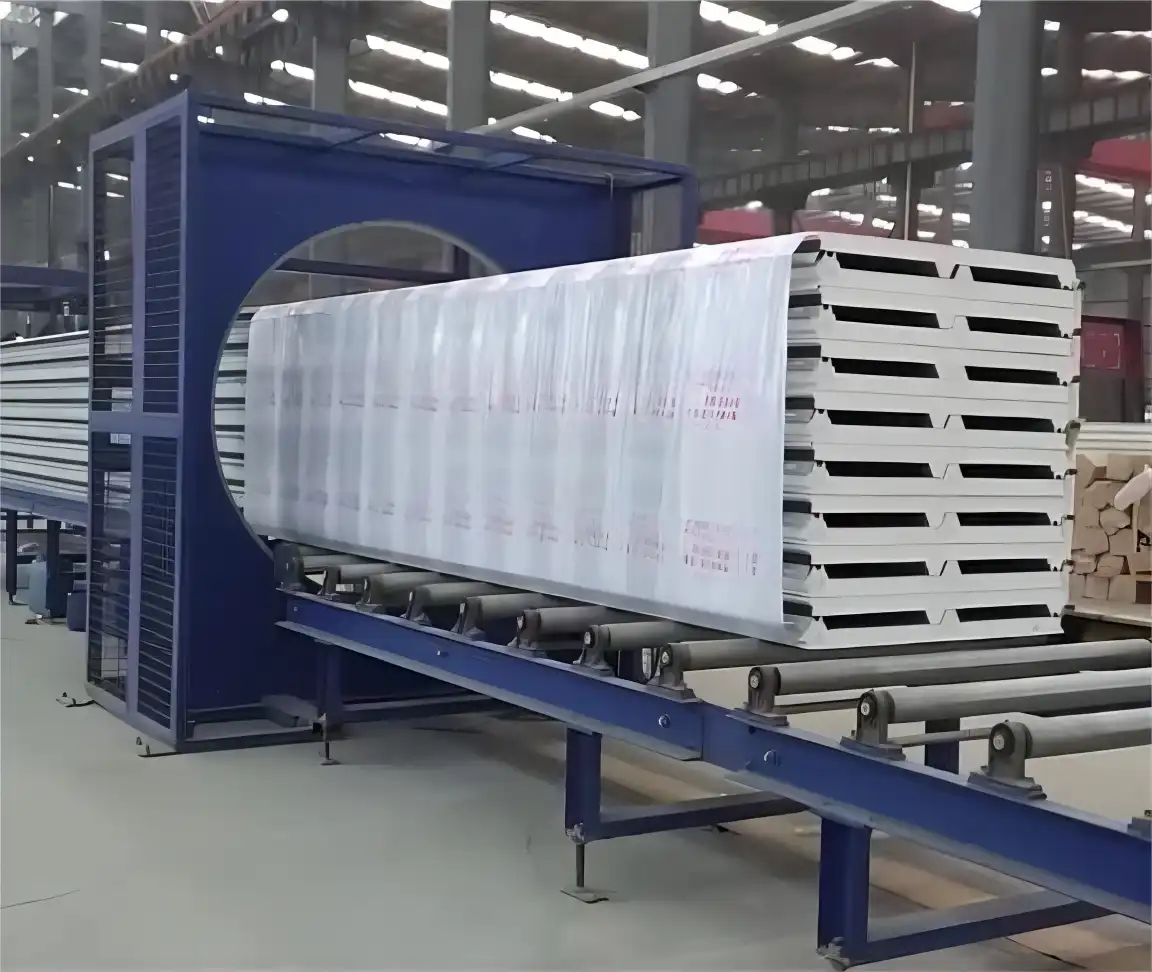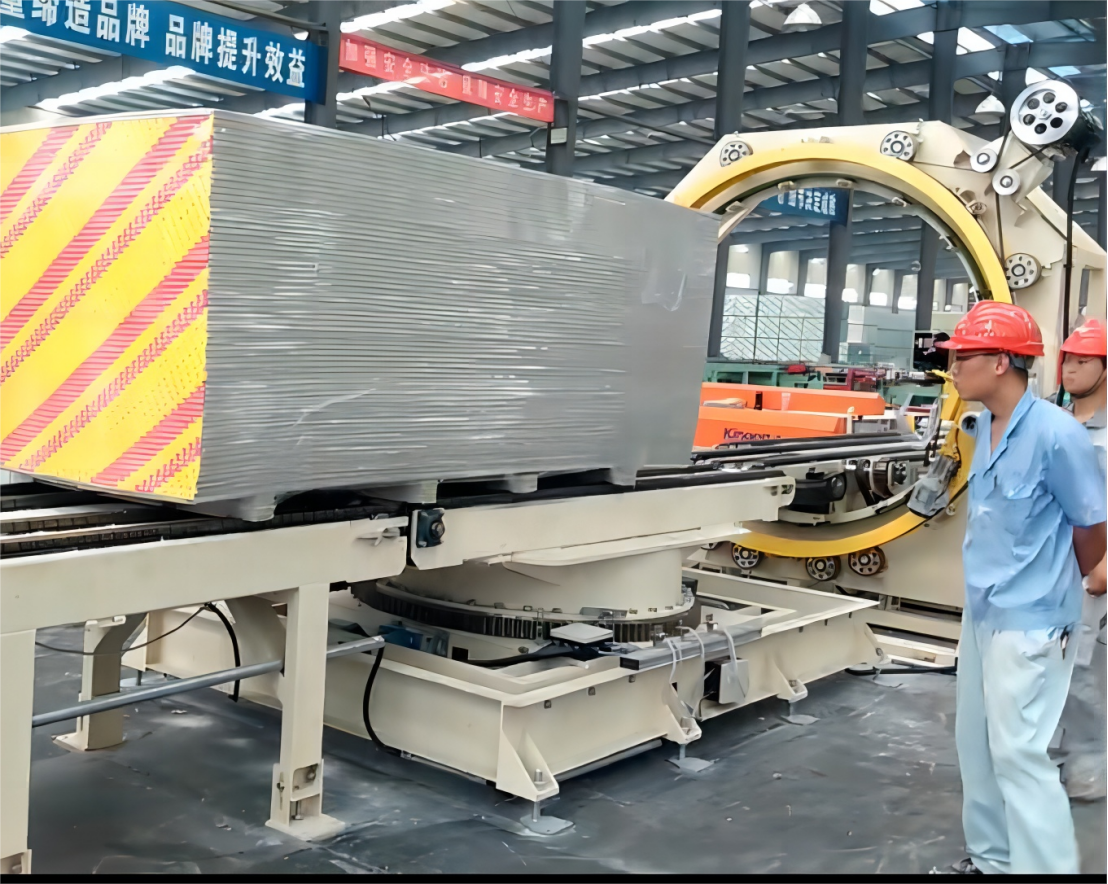Enhancing Protection and Efficiency: Understanding Horizontal Orbital Packaging Systems for Large Panels
Watch a horizontal orbital wrapper in action packaging long panels:
Handling and packaging large, long panels presents unique challenges for manufacturers and distributors. Ensuring these items are protected from damage, dust, and moisture during storage and transit is crucial. A horizontal orbital packaging system offers an effective and automated solution, commonly employed in industries like construction, woodworking, furniture, and metal fabrication.
1. How Horizontal Orbital Wrapping Works
Unlike traditional turntable stretch wrappers where the load rotates on a platform, a horizontal orbital wrapper keeps the long product stationary (or moving horizontally along a conveyor). A ring or rotating arm carrying a roll of stretch film orbits around the product as it passes through the machine's wrapping zone. This method allows for complete encapsulation of long and potentially unstable items without needing to rotate the product itself.
2. Key Components of the System
A typical horizontal orbital packaging system comprises several integrated parts designed for robust operation:
- Infeed and Outfeed Conveyors: These powered or gravity conveyors transport the panels smoothly into and out of the wrapping ring. Synchronization with the wrapping process is key for consistent results.
- Wrapping Ring/Arm: This is the core component that holds the film carriage and rotates around the product. Its diameter determines the maximum cross-section of the product that can be wrapped.
- Film Carriage System: Mounted on the rotating ring, this holds the stretch film roll. Modern systems often feature powered pre-stretch capabilities, stretching the film before application. This maximizes film yield (reducing material costs) and provides stronger load containment.
- Clamping and Cutting Unit: Automatically clamps the film at the start of the cycle and cuts it at the end, preparing the system for the next panel.
- Press-Down Rollers/Guides: Often included (especially top rollers) to stabilize the panel as it passes through the wrapping ring, ensuring a tight and uniform wrap.
- Control Panel (PLC): Allows operators to set parameters like ring rotation speed, conveyor speed, film tension, number of wraps, and pre-stretch ratio. Programmable Logic Controllers (PLCs) enable recipe storage for different product types.
- Safety Features: Guarding, emergency stops, and light curtains are essential to protect operators during automated operation.

panel horizontal stretch wrapping machine 3. Benefits of Using Horizontal Orbital Wrappers
Implementing this technology offers significant advantages:
- Superior Product Protection: Provides a tight, secure wrap around all sides of the panel, shielding it from dirt, dust, moisture, and surface scratches.
- Enhanced Load Stability: Bundles multiple panels securely or wraps individual large panels, improving handling and reducing the risk of shifting during transport.
- Increased Throughput and Efficiency: Automates the wrapping process, significantly speeding up packaging compared to manual methods.
- Reduced Labor Costs: Frees up personnel previously required for manual wrapping or handling.
- Optimized Material Consumption: Powered pre-stretch systems can reduce stretch film usage by 50-75% compared to hand wrapping or lower-spec machines.
- Versatility: Can handle a wide range of product lengths and cross-sectional dimensions (within the machine's specifications).
4. Common Applications
These systems are ideal for wrapping various large and long products, including:
- Wood Products: Doors, window frames, lumber bundles, flooring planks, large wood panels (MDF, OSB, plywood).
- Metal Products: Aluminum extrusions, steel profiles, pipes, tubing, metal sheets.
- Building Materials: Insulation panels, siding, plastic profiles, countertops.
- Furniture: Assembled or unassembled large furniture components.
- Other Long Items: Rolled carpets, textiles, large bundles.
5. Selecting the Right System
Consider these factors when choosing a horizontal orbital wrapper:
- Product Dimensions: Maximum length, width, and height of the panels.
- Product Weight: Ensure conveyors and frame can handle the load.
- Required Speed: Panels per hour needed to match production output.
- Level of Automation: Integration with existing production lines.
- Film Type and Pre-Stretch: Compatibility with desired film and efficiency requirements.
- Budget: Balancing initial investment against long-term operational savings.

6. Conclusion
Horizontal orbital packaging systems provide a robust, efficient, and effective solution for protecting large and long panels. By automating the wrapping process, reducing material costs through pre-stretch, and ensuring superior load containment, these machines offer significant value to industries dealing with oversized products. Investing in the right system can lead to improved product quality upon delivery, increased operational efficiency, and substantial long-term cost savings.
